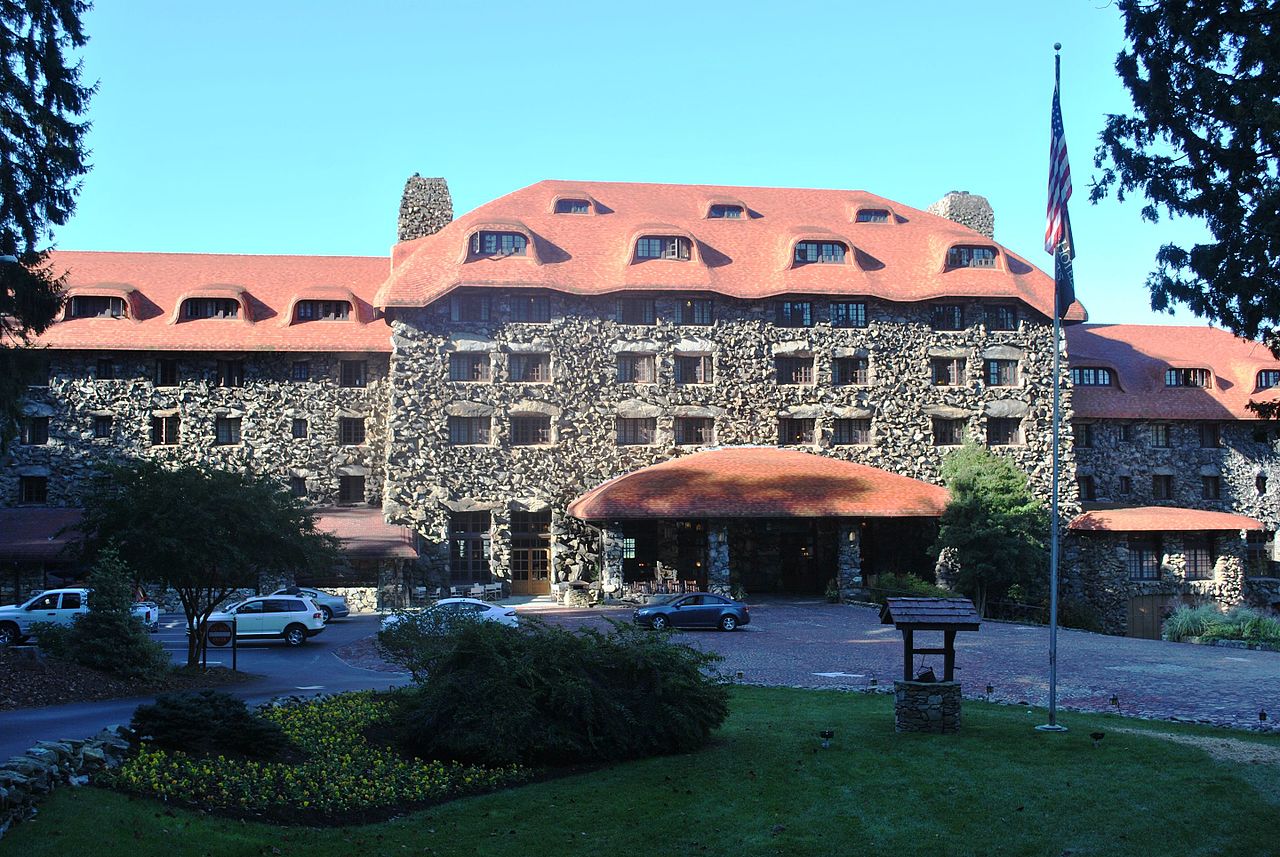By Elliott Brack
Editor and Publisher, GwinnettForum
APRIL 13, 2021 | A new novel by an American Cherokee Indian set at the Grove Park Inn in Asheville gave me insights into a side note of World War II history. The book, Even As We Breathe, is by Annette Saunooke Clapsaddle, the first enrolled member of the Eastern Band of the Cherokee Indians to publish a novel. It was released in September. The author graduated from Yale University and The College of William and Mary. She is the executive director of the Cherokee Preservation Foundation, and an English teacher at Swain County (N.C.) High.
![]() The 229-page book is fast-paced, and is a good read, revolving around Asheville and Cherokee, N.C.
The 229-page book is fast-paced, and is a good read, revolving around Asheville and Cherokee, N.C.
Many Gwinnettians may have visited the Grove Park Inn. We once attended a Gwinnett Chamber of Commerce retreat there, and our family have been guests on other occasions. But we didn’t know that it had been an internment camp during World War II.
The Asheville Citizen reported that in the spring of 1942, the U.S. Government leased the Grove Park Inn as an internment camp for enemy diplomats. The government also leased The Greenbrier in West Virginia, the Homestead in Virginia, The Assembly Inn at Montreat, N.C. and other resorts, for camps. Regular commercial guests were not permitted to stay at the resorts when used as camps. The internment camps were reported in a front page story in The New York Times.
American diplomats being caught in countries for which we were at war (Germany, Italy and Japan) were also held in similar internment in those countries. The idea was to house people from our enemy countries in nice facilities, with anticipation that Americans held in the enemy countries would also be treated well.
Those staying at the Grove Park Inn were treated as regular guests, enjoying the facilities, such as golf, badminton, lawn bowling, shuffleboard and card games.
Robert A. Fearey, who was the private secretary to U.S. Ambassador to Japan Joseph C. Grew, wrote fondly of his time interned in Japan. He wrote about scheduling dignitaries’ golf games and drinking up the ambassador’s wine collection, so as to not leave it for the Japanese. (To read more of Fearey’s story of internment life in Japan, go here.)
- To read an account of Americans trapped in Germany, click here.
Germans and Italians, including German newspaper correspondents living in this country at the start of the war, were sent to the Greenbrier, along with Italians, while the Japanese on the East Coast were at the Homestead. But the story goes, the Germans and Italians did not get along, so Italians were moved to the Grove Park Inn.
It was thought the internment would be only perhaps two months, but it lasted for seven months. Some even stayed longer. Later on, an elaborate prisoner exchange took place, with ships from two nations meeting in such places as South American and Madagascar, for prisoner swap, sending the diplomats to their respective home nations. After the diplomats departed, the government housed military officers needing convalescent care.
Back to the origins of the Grove Park Inn: it was built in 1913 by a person from St. Louis, Mo., Edwin W. Grove, a pharmacist, who enjoyed spending the summers there. The Inn was built in a year, using native granite.
Now another new (to me) story: Wikipedia says that in World War I, German nationals were automatically classified as “enemy aliens.” Two of the four main World War I-era internment camps were located in Hot Springs, N.C., and Fort Oglethorpe, Georgia.
- Have a comment? Send to: elliott@brack.net










Follow Us